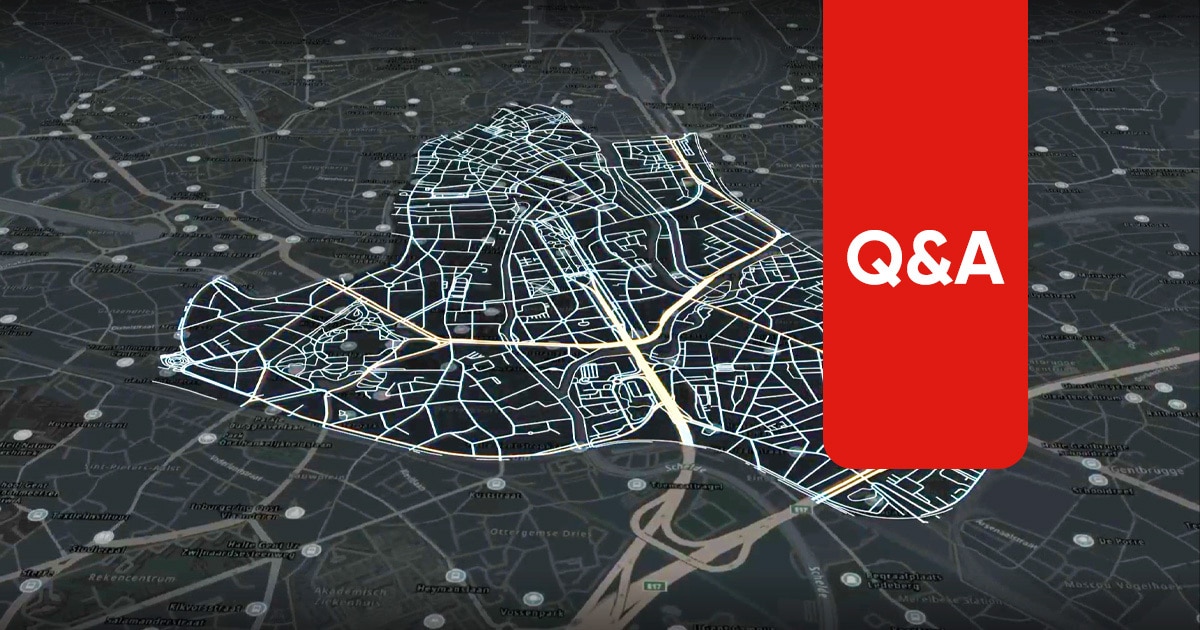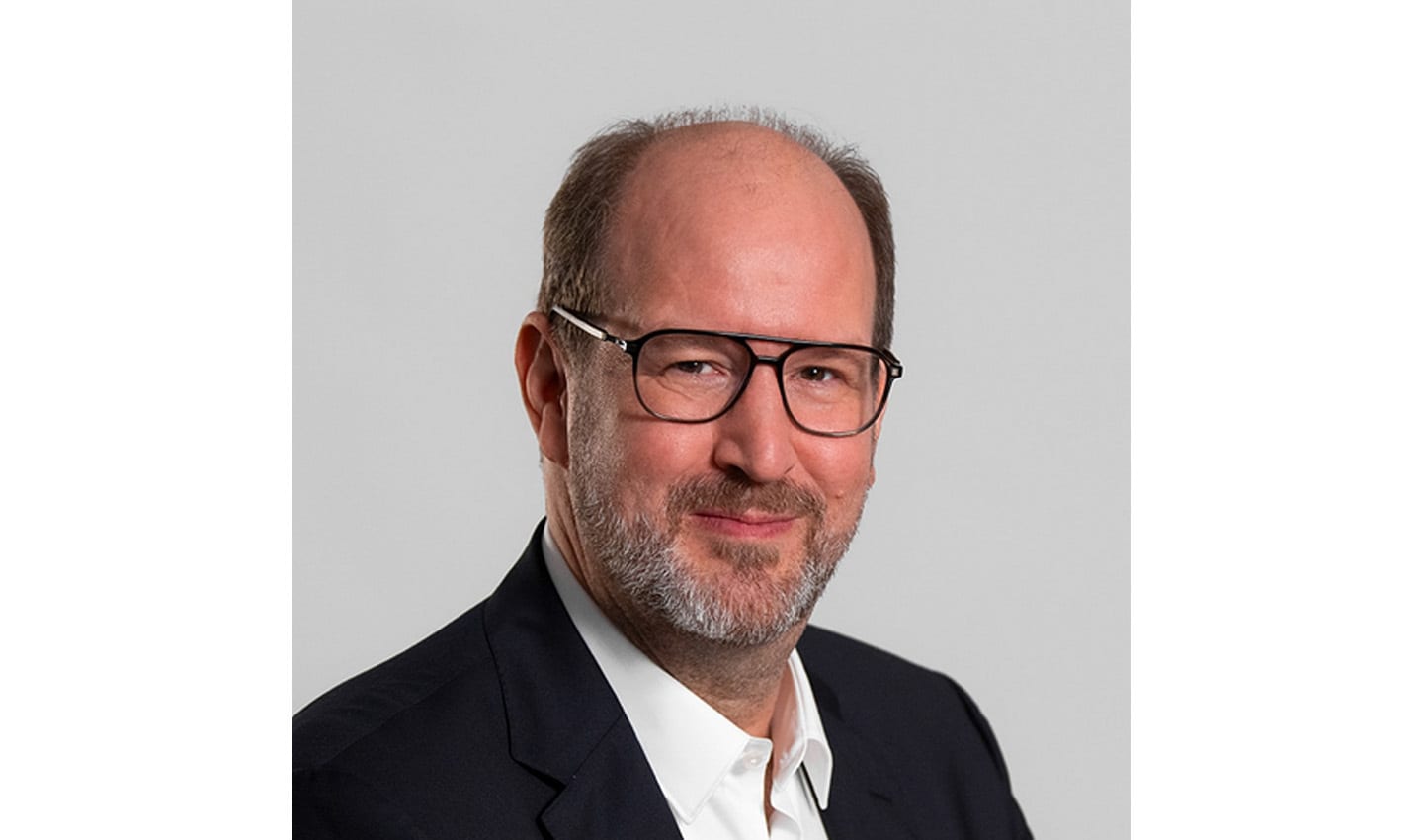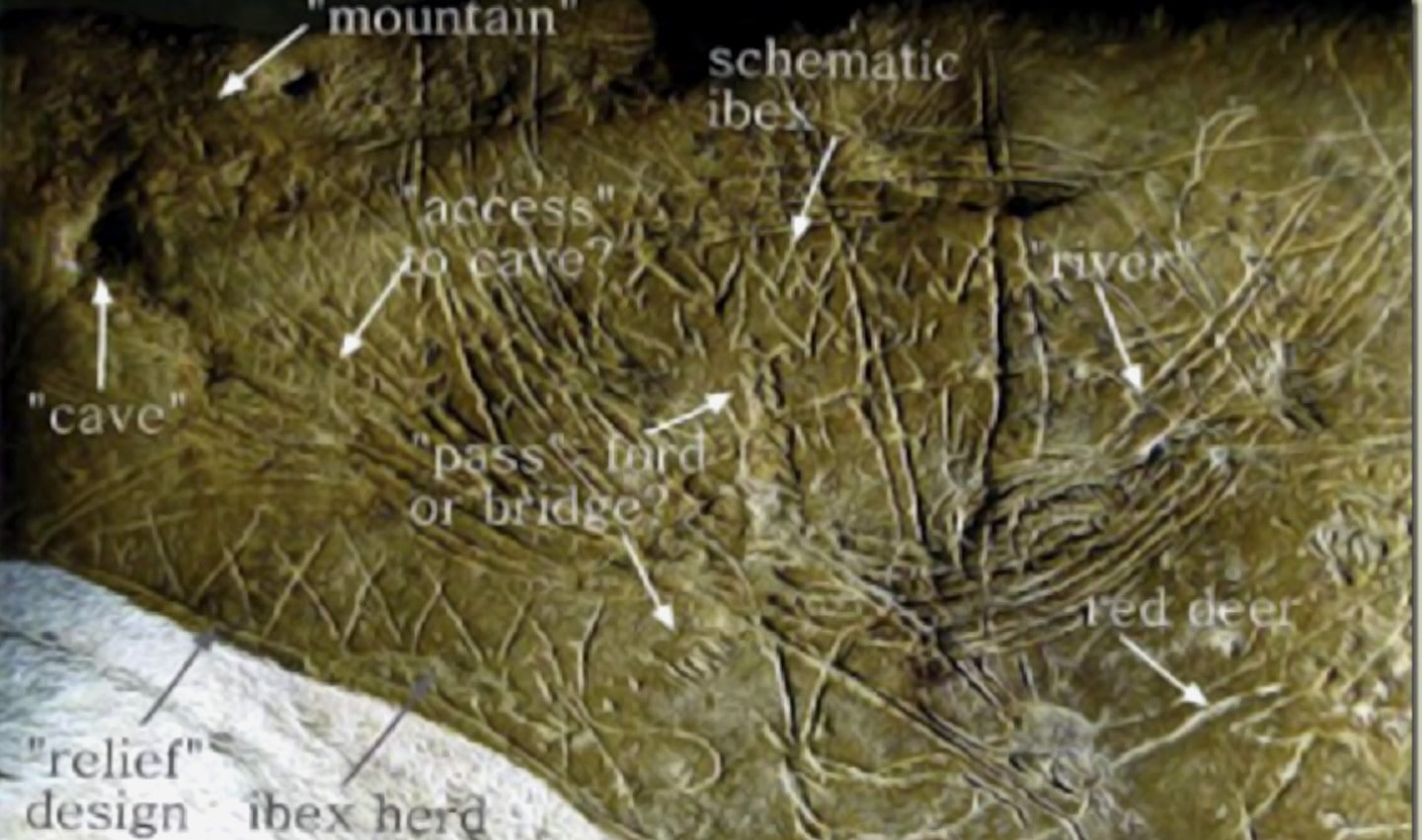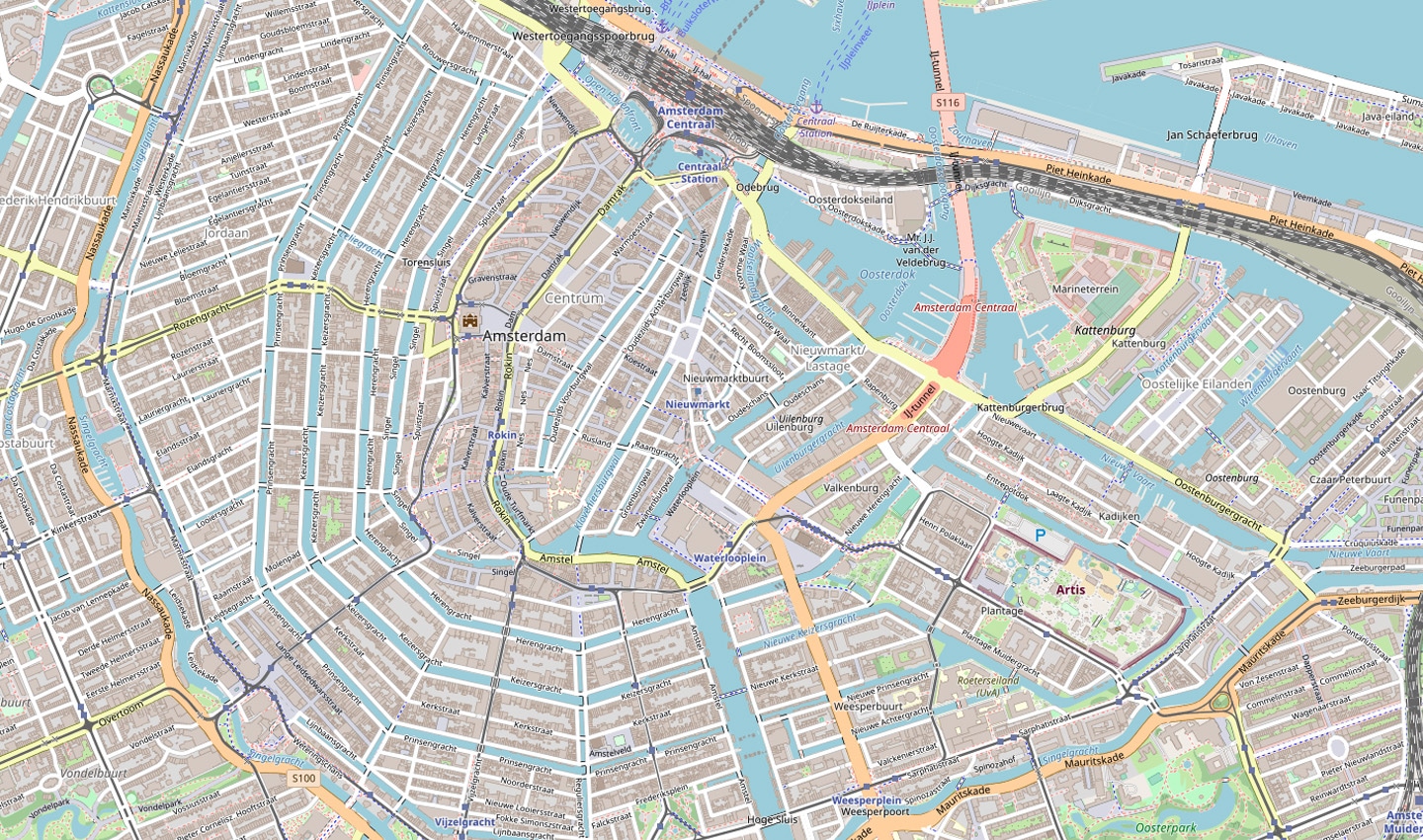
In November 2022, TomTom announced its new geospatial data ecosystem, the TomTom Orbis Maps. It’s one of the most significant announcements in the company’s history and there's a palpable buzz over what’s on the horizon.
Talk of strategy and data can be quite abstract, though. And TomTom’s new approach and platform are broad too. So, we’re sitting down with a number of key TomTom’ers to ask them for their take on it all. Considering that TomTom is a tech company and many of the questions we’ve seen since the announcement are of a technical nature, who better to start with than TomTom’s Chief Technical Officer, Eric Bowman.
The interview: Eric Bowman on TomTom's new Orbis Maps
TomTom Editorial (TTE): What do you do as CTO at TomTom? What does that job involve?Eric Bowman (EB): As CTO I’m responsible for ensuring that we remain competitive through our use of technology.
I work with our customers and product development teams to ensure that we’re building products that provide a competitive edge through technology, and which solve real problems and create real value for our customers.
I also manage a 2,000-person-strong engineering team, where I strive to create a learning environment for our software and data teams, so they can grow their own leadership, enjoy the satisfaction of creating impact, and continue to grow their capabilities and gain experience.
 Eric Bowman, TomTom's Chief Technical Officer. Eric is responsible for TomTom's 2,000+ strong team of engineers that are building the smartest map on the planet.TTE: What’s your background? What were you doing before you joined TomTom?
Eric Bowman, TomTom's Chief Technical Officer. Eric is responsible for TomTom's 2,000+ strong team of engineers that are building the smartest map on the planet.TTE: What’s your background? What were you doing before you joined TomTom?EB: My academic background is in physics, but I worked for many years as a software engineer and software architect in Silicon Valley and in Europe. Most recently I was VP Engineering at Zalando.
I’ve worked in computer games, telecommunications, location technology and ecommerce, from large companies to startups. Over the last decade I’ve transitioned from writing software and designing software architectures to managing and leading the people who do that — and the people who manage them.
TTE: How do the challenges you faced there differ to what you face at TomTom?EB: At one extreme, I’ve been able to work in environments where a team can make a change today and measure the impact with customers tomorrow. At the other extreme, I’ve worked on systems that were constrained by complicated, committee-based standards, which took years to even have an idea whether things would work.
TomTom is somewhere in the middle: discipline and a long time-horizon are essential to being able to fully understand the landscape and context. Yet the company is very open to change, and the learning culture is in place, so despite the long time-horizon, some things can (and do) change rapidly as we learn new information.
TTE: Take me through your perspective on TomTom’s new strategy and Orbis Maps. Why are you excited about it?
EB: Of course, this strategy is not new to the senior team — we’ve been working toward this for a few years now. But it is new to share it with the world, which itself is pretty exciting.
Much more exciting, though, is how our new Orbis Maps will create a much better map for our customers, and how it will accelerate innovation across all the industries that depend on location data — which is most industries!
Maps and location technology are special: they are extremely primal. The oldest known maps are between 16,000 and 27,000 years old. Maps are one of the first ways humans distinguished themselves from other species, and they remain integral to how we find our way in the world.
 The Abauntz Cave Map is one of the oldest maps, dating back thousands of years. Credit: Andrea Vianello - ResearchGate.
The Abauntz Cave Map is one of the oldest maps, dating back thousands of years. Credit: Andrea Vianello - ResearchGate.
Our [TomTom’s] new Orbis Maps is creating an ecosystem for our customers. One that creates a map that is fresher, more accurate and has more coverage than any other, and it’s designed to keep creating that ever-changing map of the world for the foreseeable future.
TTE: Can you briefly explain why it’s so important that the mapping market has this option?
EB: The world of maps today is pretty siloed. Everyone who is making a commercial map — whether they admit it or not — is starting to see that there are limits to what any one company can do, no matter how big or powerful or well funded they are.
We see that the future is less about differentiation of the map and more about differentiation on the map. The decision around which map to use is commercially difficult and it limits your options after you make the choice.
Our Maps Platform changes the game. Instead, choosing our [TomTom’s] map will increase your options, and instead of choosing product A from one company or product B from another company, you are choosing an entire ecosystem. One that’s designed to improve, the more people choose it.
When you look at it in this way, it’s clear this is a much better approach. More freedom for customers, more value created for everyone.
TTE: What role does TomTom play in the world of global mapmaking right now? How do we see that position evolving with this announcement?
EB: Mapmaking is a pretty hard capability to copy and as a result, there aren’t very many commercial mapmakers.
Realistically, there are only two of us [mapmaking companies] selling a map that other companies can build on. There are a couple of others that either provide services that use a map and others that build some extensions on OSM.
Our approach is quite different and not easy to copy: we have data that others do not, and we have seen this coming for some time. We have managed our operations carefully, and we have created a very healthy relationship with OSM. OSM plays an important role, but we are taking a different approach than just “building atop OSM.”
Our map uses OSM as its creators intended and we use data and computation to build a map and operate a platform. That puts us in a unique position in the world of global mapmaking.
We are participating in the OSM community, we are thriving in automotive and through that have amassed extremely rich data to improve the commercial features of our map. We also have many years of being a great partner for the best companies in the world, whom we team up with to solve their hardest problems.
 OpenStreetMap is an intricately detail map that's created by passionate mappers from around the world. The people that walk, cycle and drive the streets they map. Credit: OpenStreetMapTTE: TomTom is building a whole new map ecosystem to bring developers, businesses a fresher, richer, more useful map. For a company that’s been doing this for 20+ years, where do you even start with a project like this?
OpenStreetMap is an intricately detail map that's created by passionate mappers from around the world. The people that walk, cycle and drive the streets they map. Credit: OpenStreetMapTTE: TomTom is building a whole new map ecosystem to bring developers, businesses a fresher, richer, more useful map. For a company that’s been doing this for 20+ years, where do you even start with a project like this?EB: The beauty of having been at this so long, is that you start to see patterns and opportunities that are difficult to see unless you are very close to the problem.
Every step of our long journey creating maps has been one learning after another. More concretely, we saw an opportunity with a small team to take a couple of key steps. One step was shifting toward using OSM as a super source for the map. Another was working through the research challenges of translating the data we get in real time into insights that improve the map.
We started small, testing hypotheses as we went, sometimes gaining evidence to take the next step, other times trusting our hypothesis. But always with a clear north star that we have the opportunity to not just create a product for our customers, but a way to accelerate innovation across the industry.
TTE: What is your overall goal and ambition for TomTom, where are you aiming? And why?EB: I have two professional ambitions, one for the world and one for TomTom.
For the world, I want us to change how people in the future are able to use location data to solve their problems. I seek the sweet spot that unlocks innovation and allows multiple industries globally to take a step-up in improving efficiency, convenience and safety for their customers. That, for me, is the opportunity for TomTom to leave a second “ding in the universe” (the first being the introduction of satellite navigation devices).
 The TomTom portable navigation device, PND, transformed how people travel and it lays the mapmaking foundation for what's to come.
The TomTom portable navigation device, PND, transformed how people travel and it lays the mapmaking foundation for what's to come.My aspiration for TomTom is that we continue to be seen as one of the great technology success stories in Europe. It’s already true that coming to work at TomTom is fantastic for your career, that our management approach is exceptional and humanist. It’s a place where you’ll work with fantastic people on hard problems and become better at creating whatever impact you’d like to create in your career.
This industry stretches back many thousands of years and yet takes advantage of the very latest technology and innovation. Those of us lucky to work in it, I feel, have an obligation to continue to make a positive contribution to the world by working on things that matter to people, by being inclusive and always human and showing our appreciate for those that struggled before us to make the world better. We’ve got to work hard and make it even better still.
Check back soon to read what other TomTom’ers have to say about the company’s new strategy and Orbis Maps. We’ve got talks with people from TomTom’s OSM outreach team, product team and more from the technical folks behind the new map.
Answers have been very lightly edited for style, brevity and clarity.People also read
)
The world needs a better map: TomTom is making it with its new Orbis Maps and ecosystem
)
Super sources will power the 'freshest map on the planet.' But what are they?
)
The EU is regulating data shared between connected cars, and why that’s a good thing
)
The Boise boom: How mapmakers keep on top of boomtowns
* Required field. By submitting your contact details to TomTom, you agree that we can contact you about marketing offers, newsletters, or to invite you to webinars and events. We could further personalize the content that you receive via cookies. You can unsubscribe at any time by the link included in our emails. Review our privacy policy. You can also browse our newsletter archive here.
)